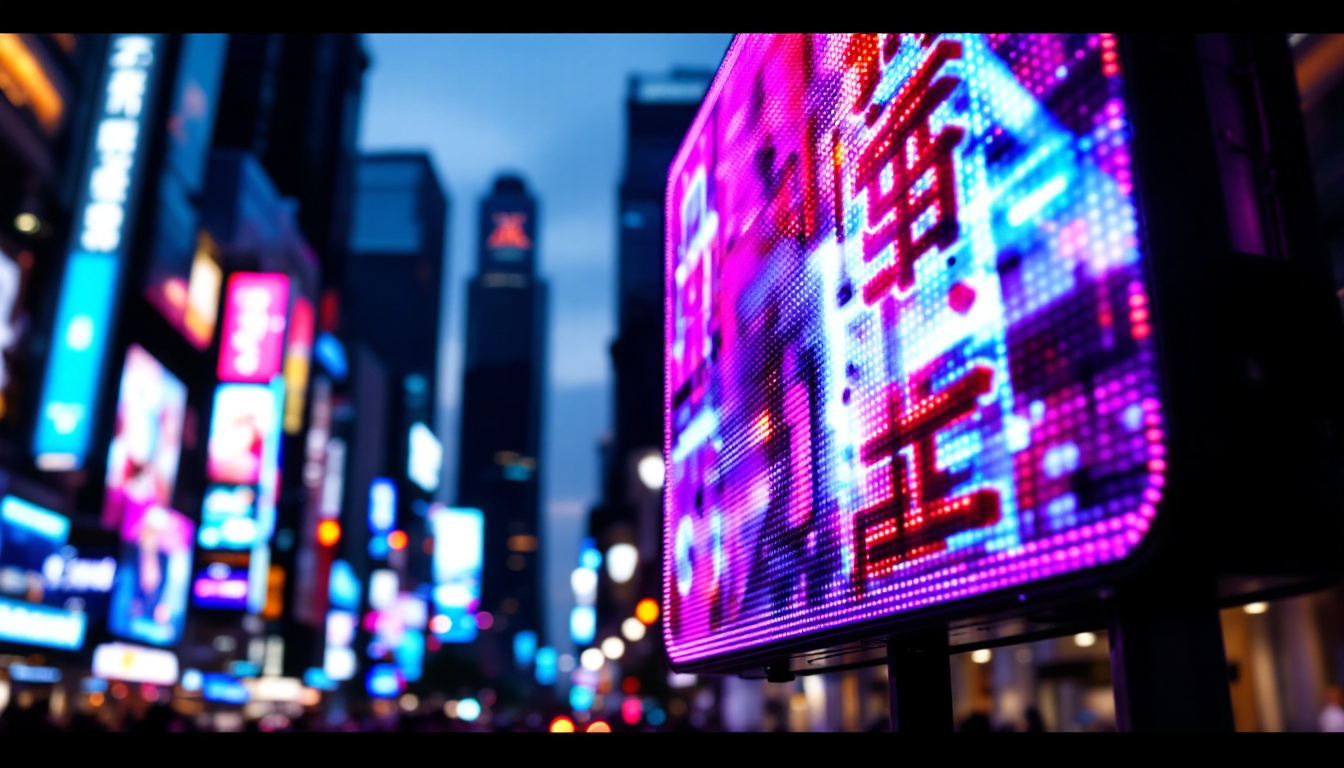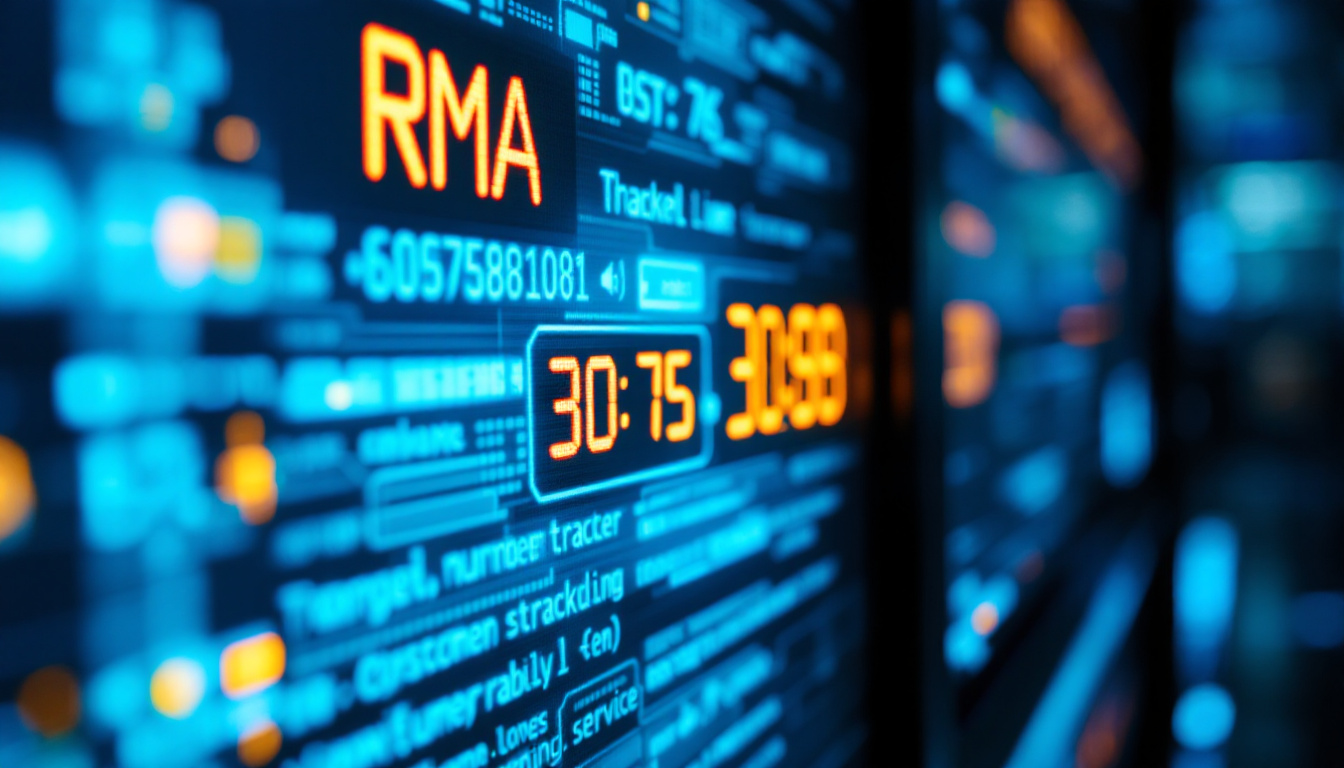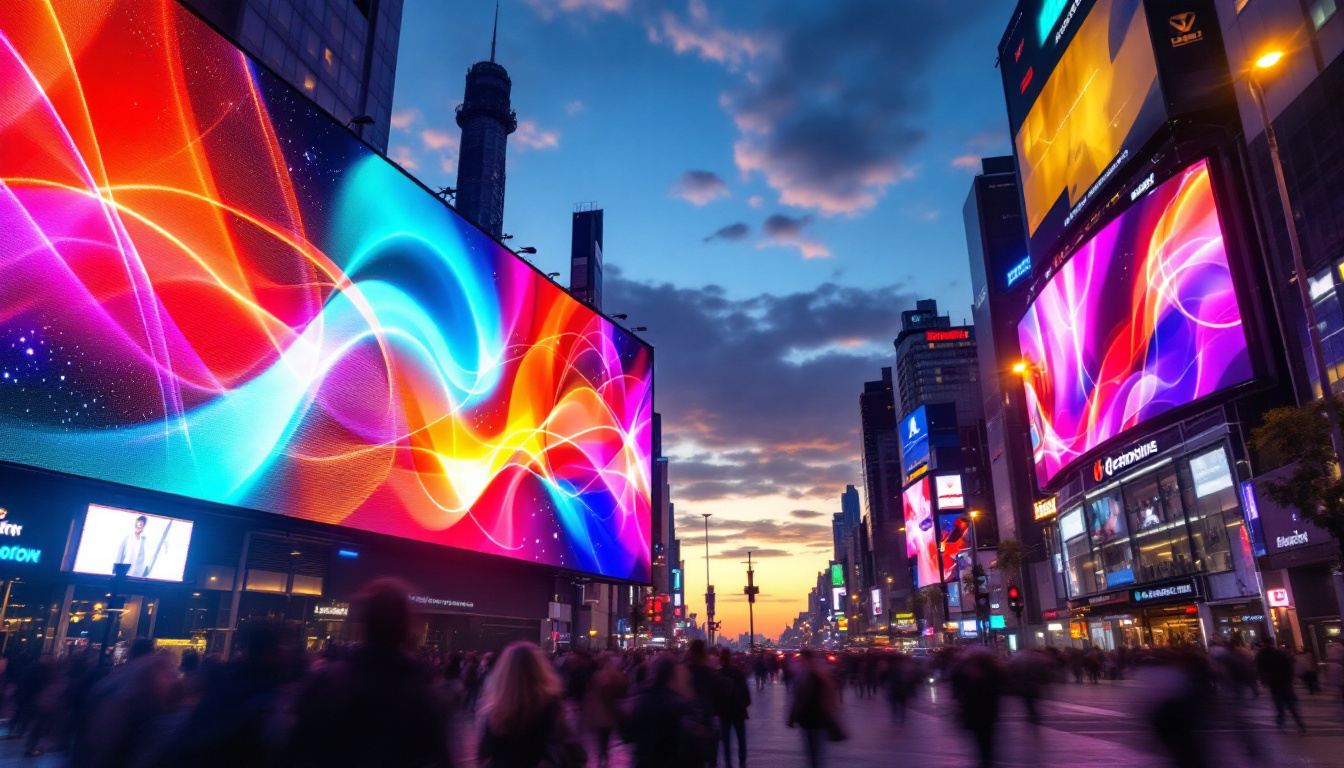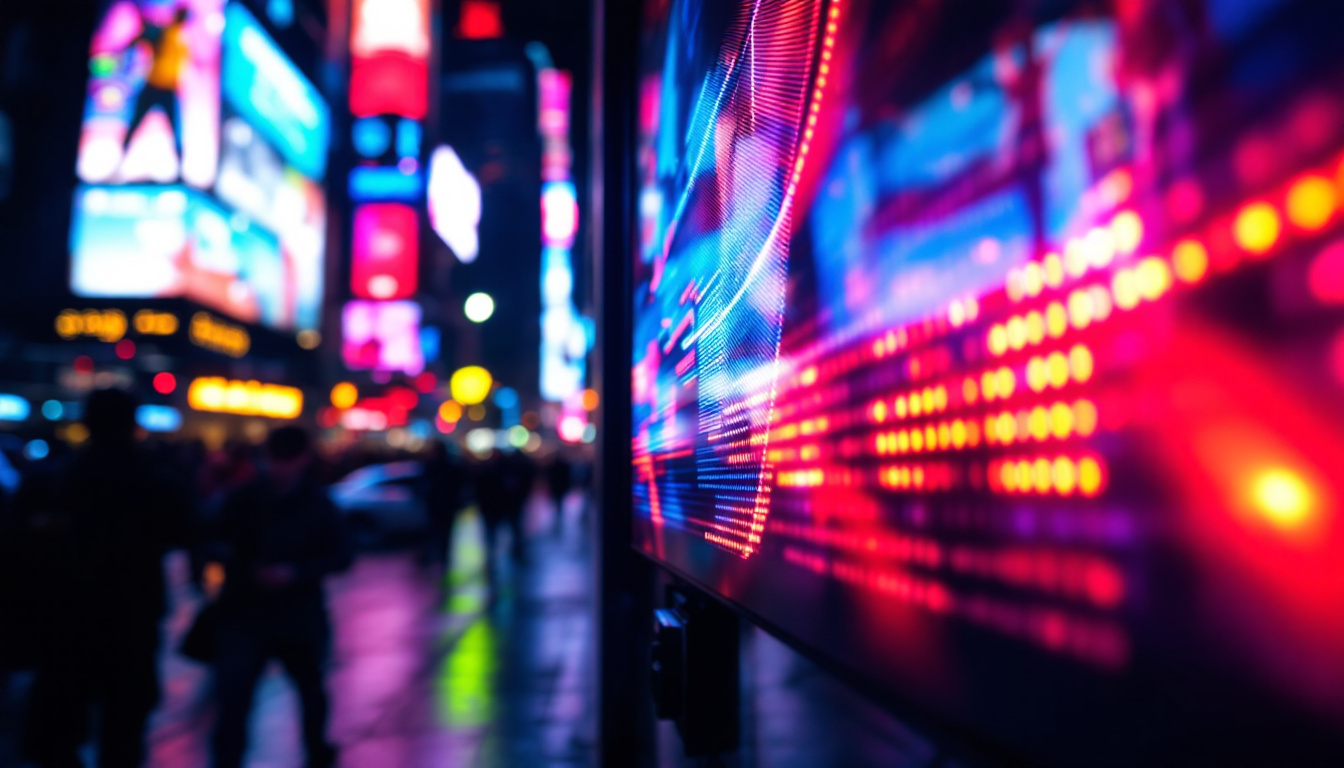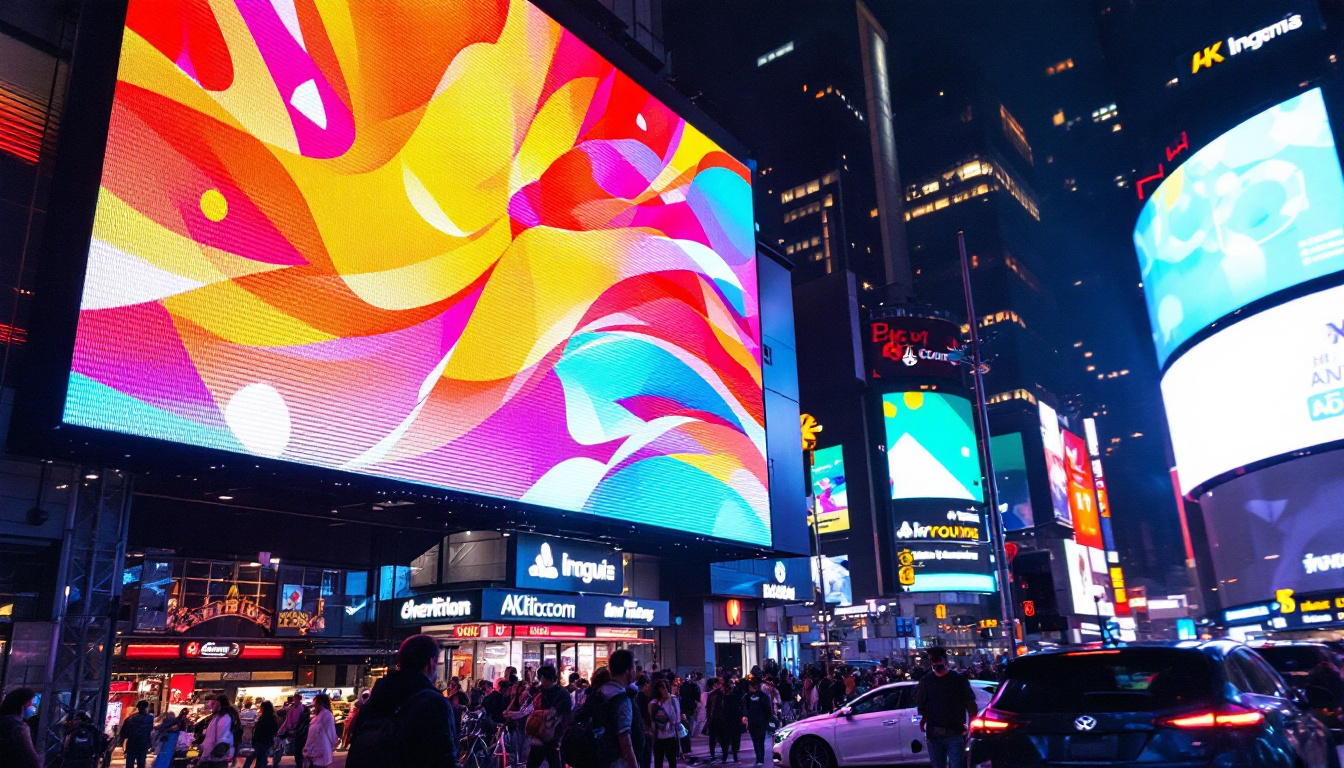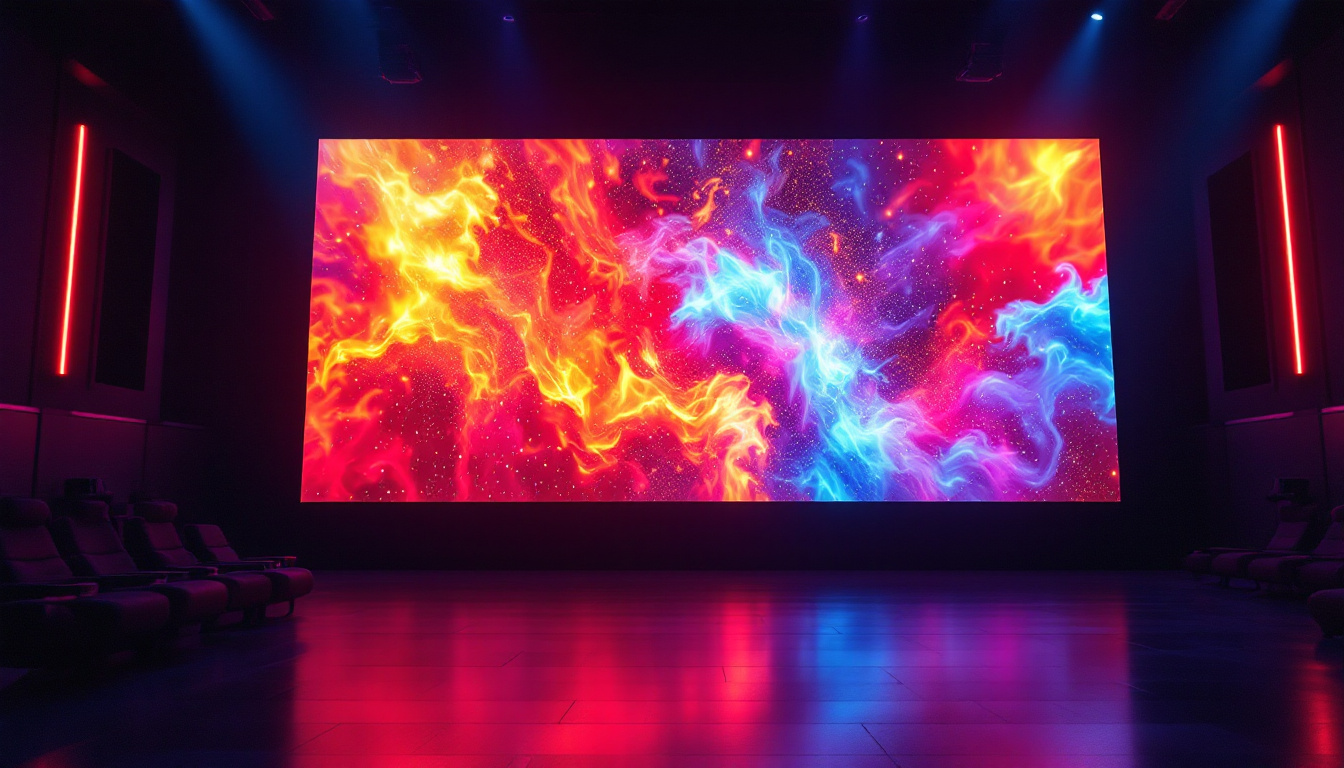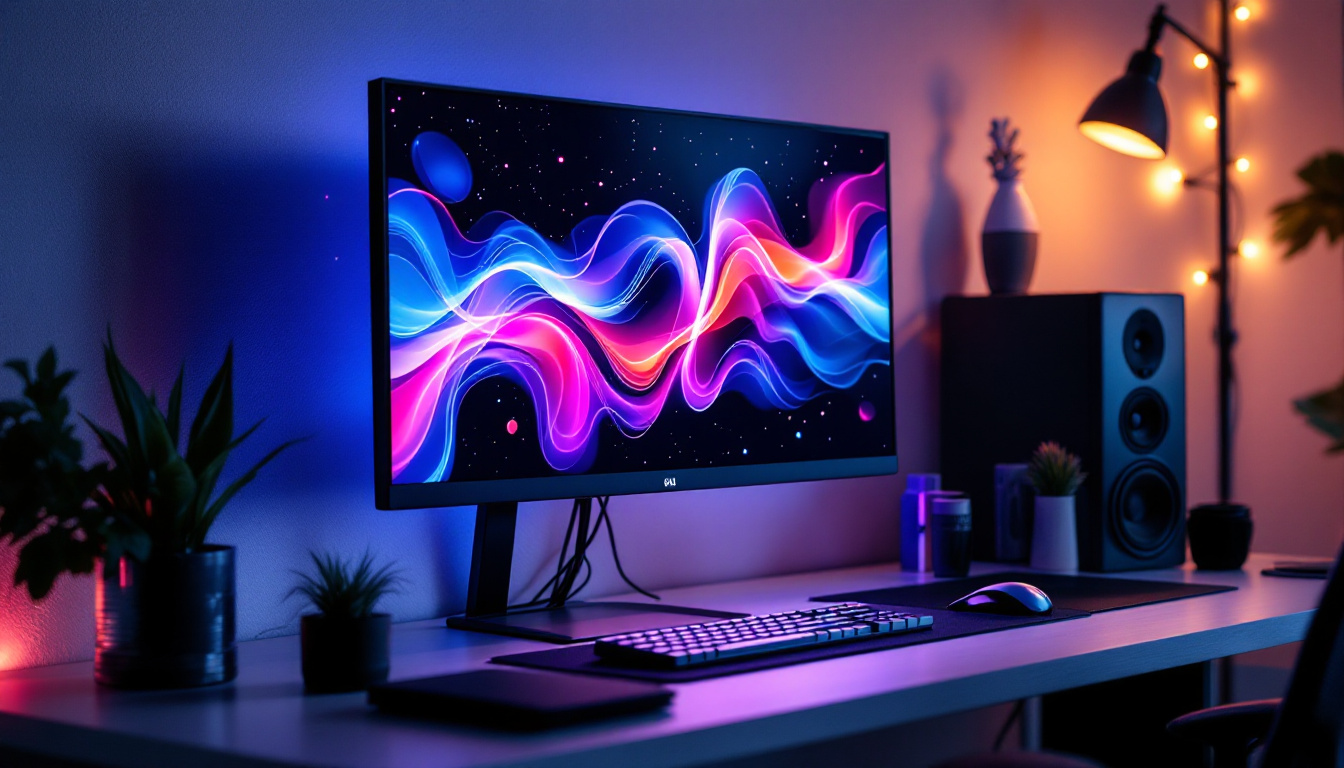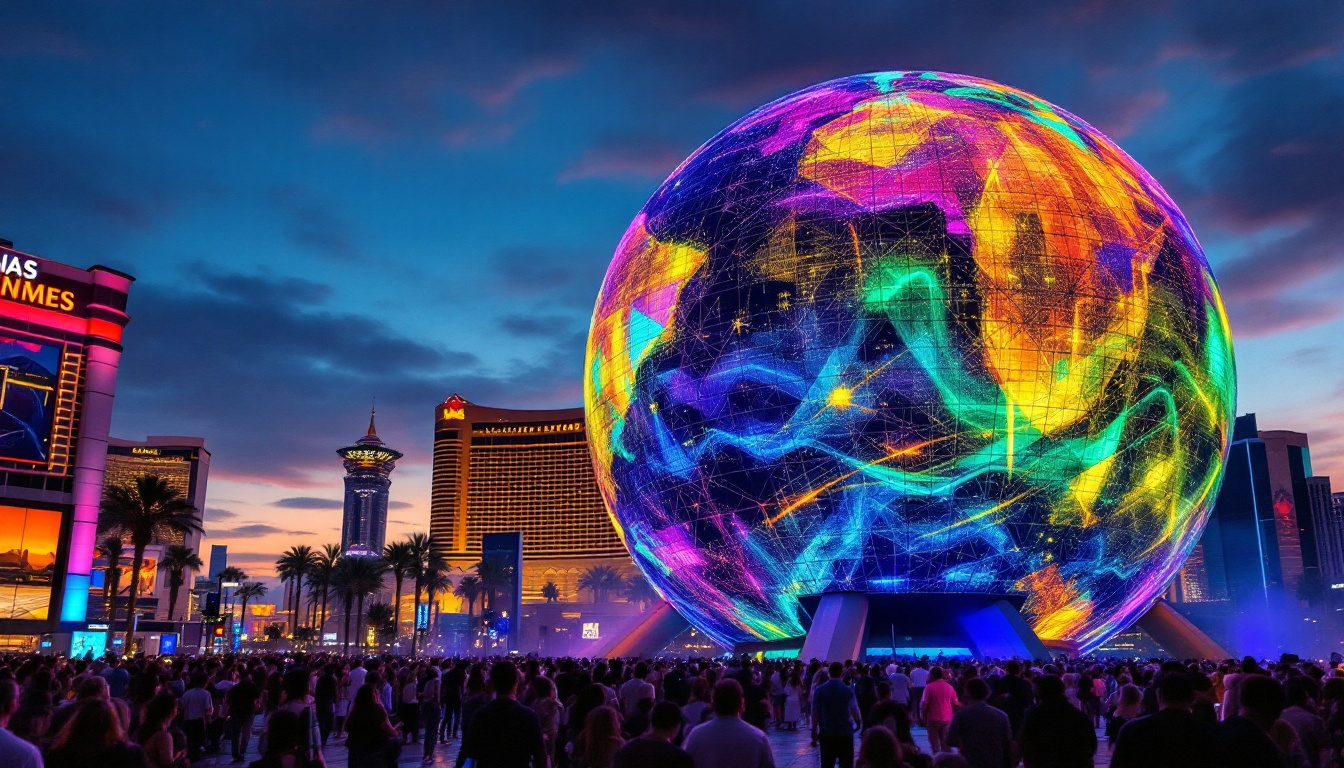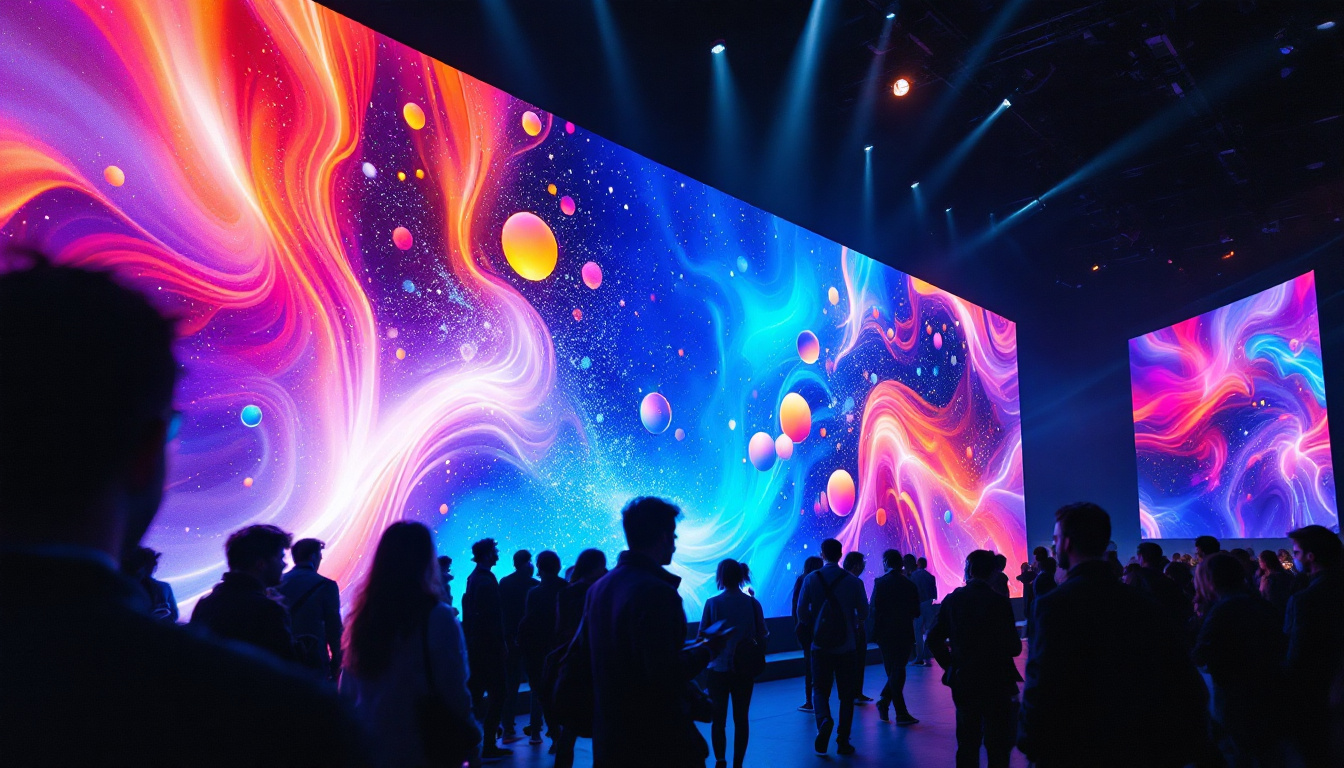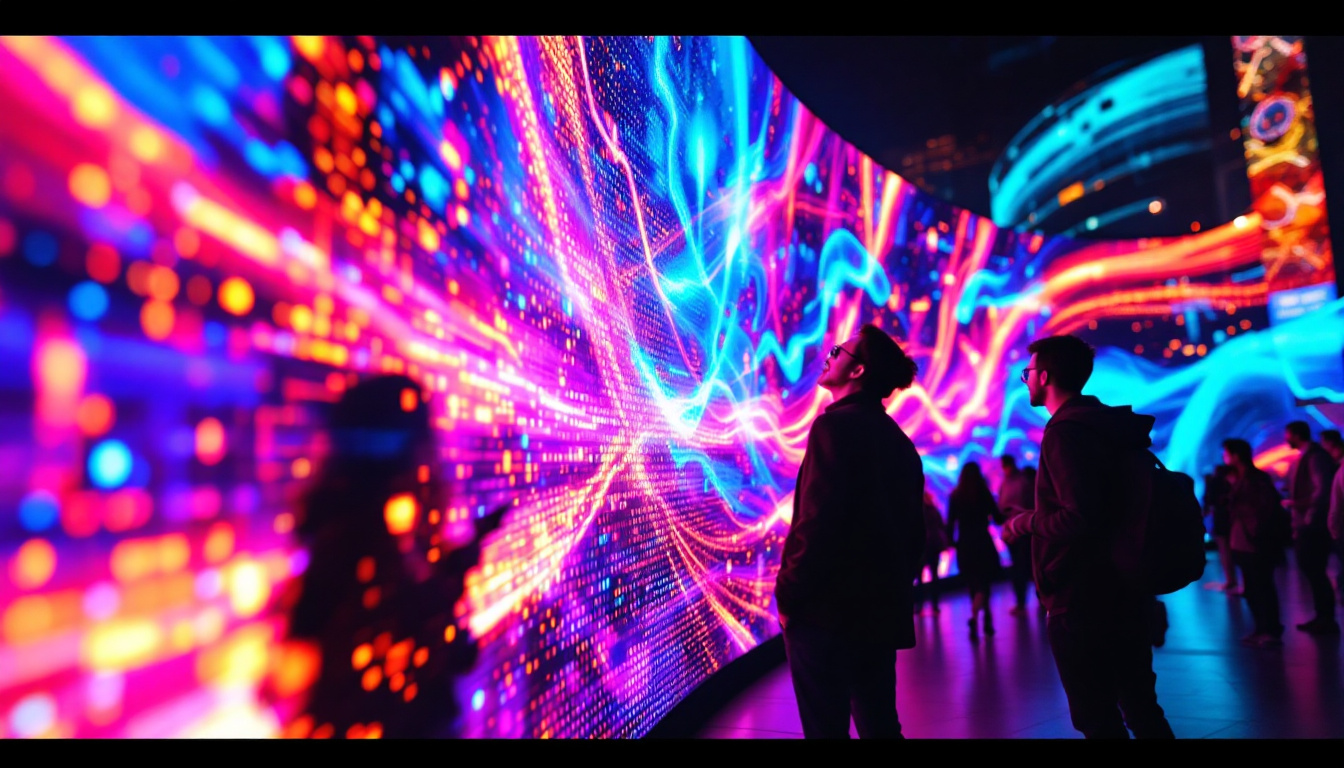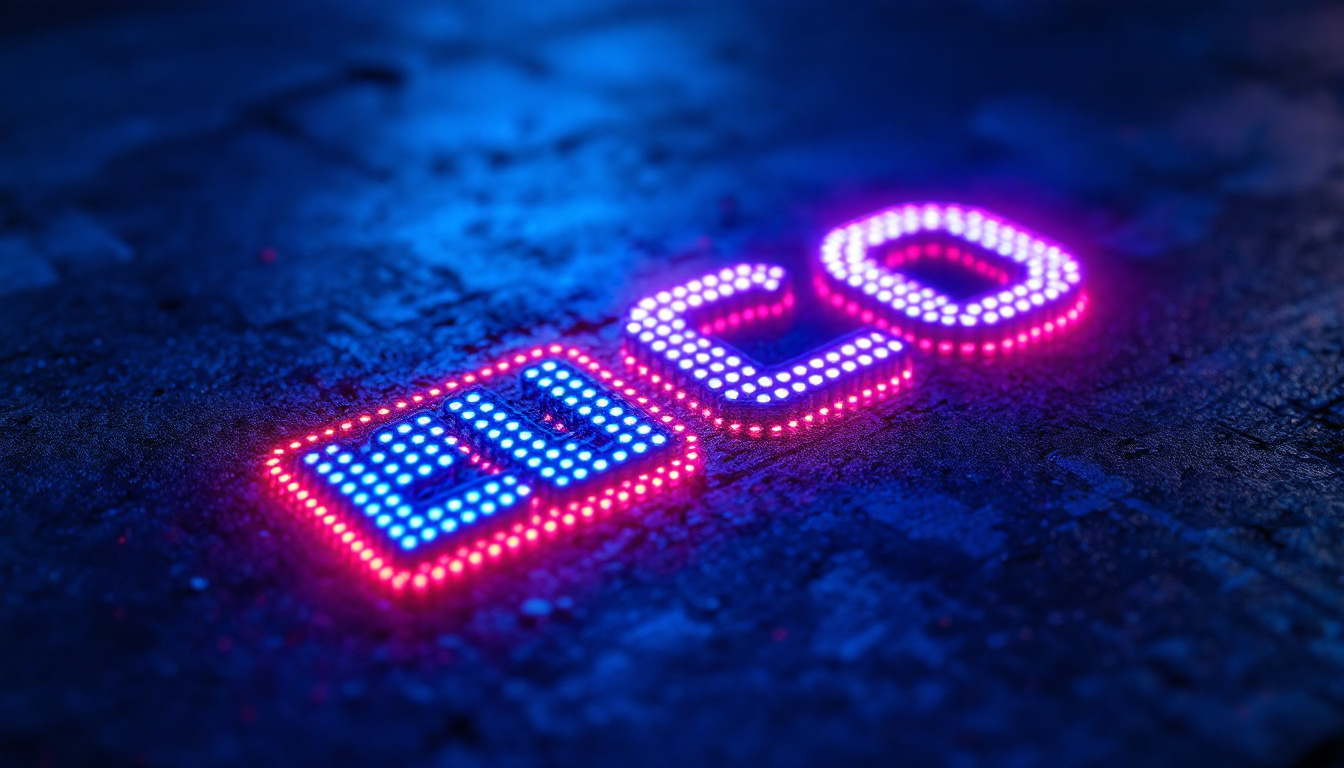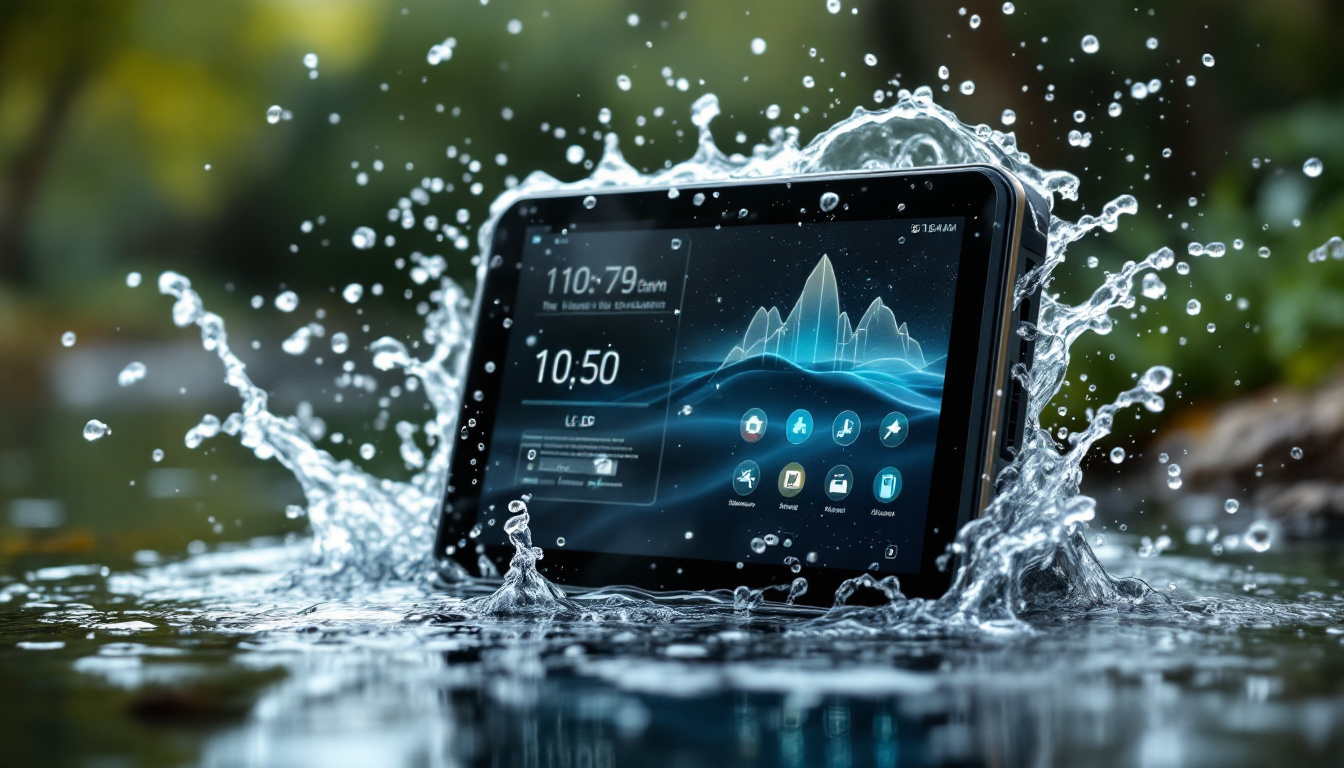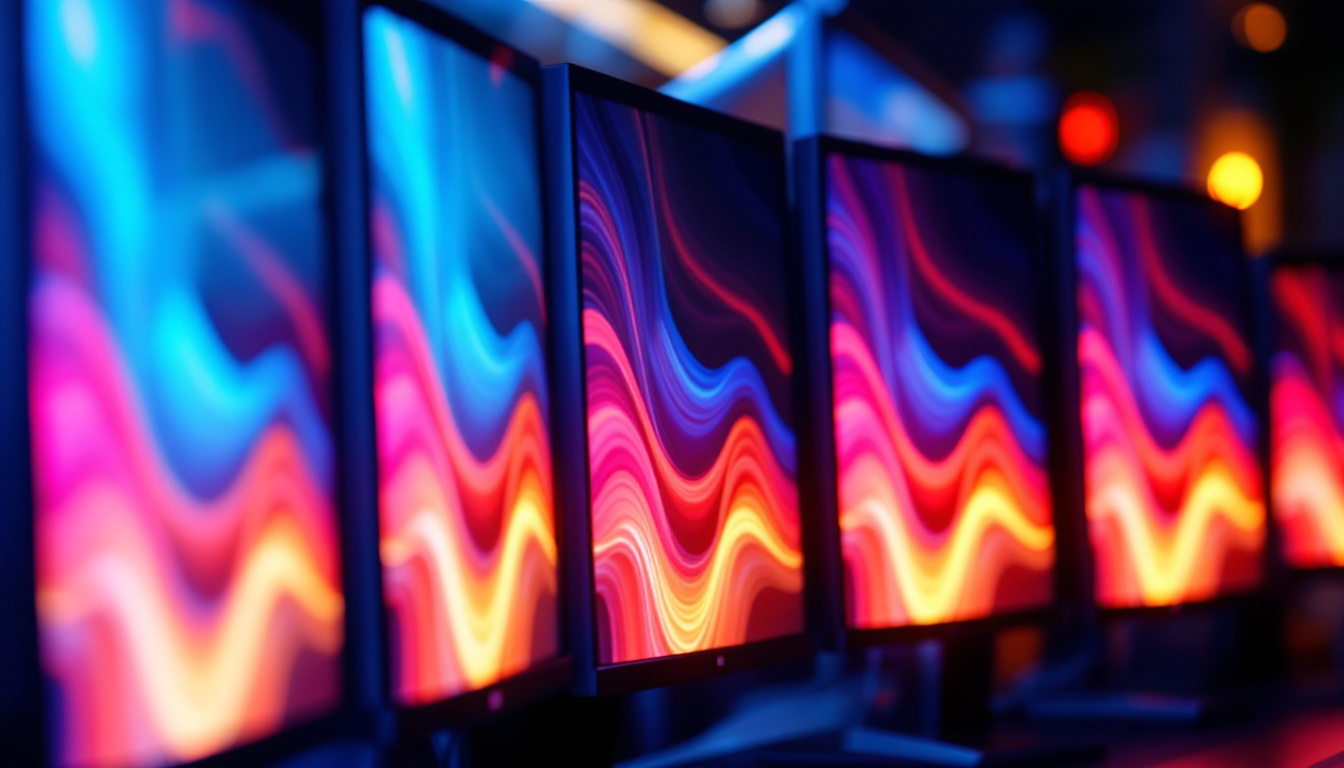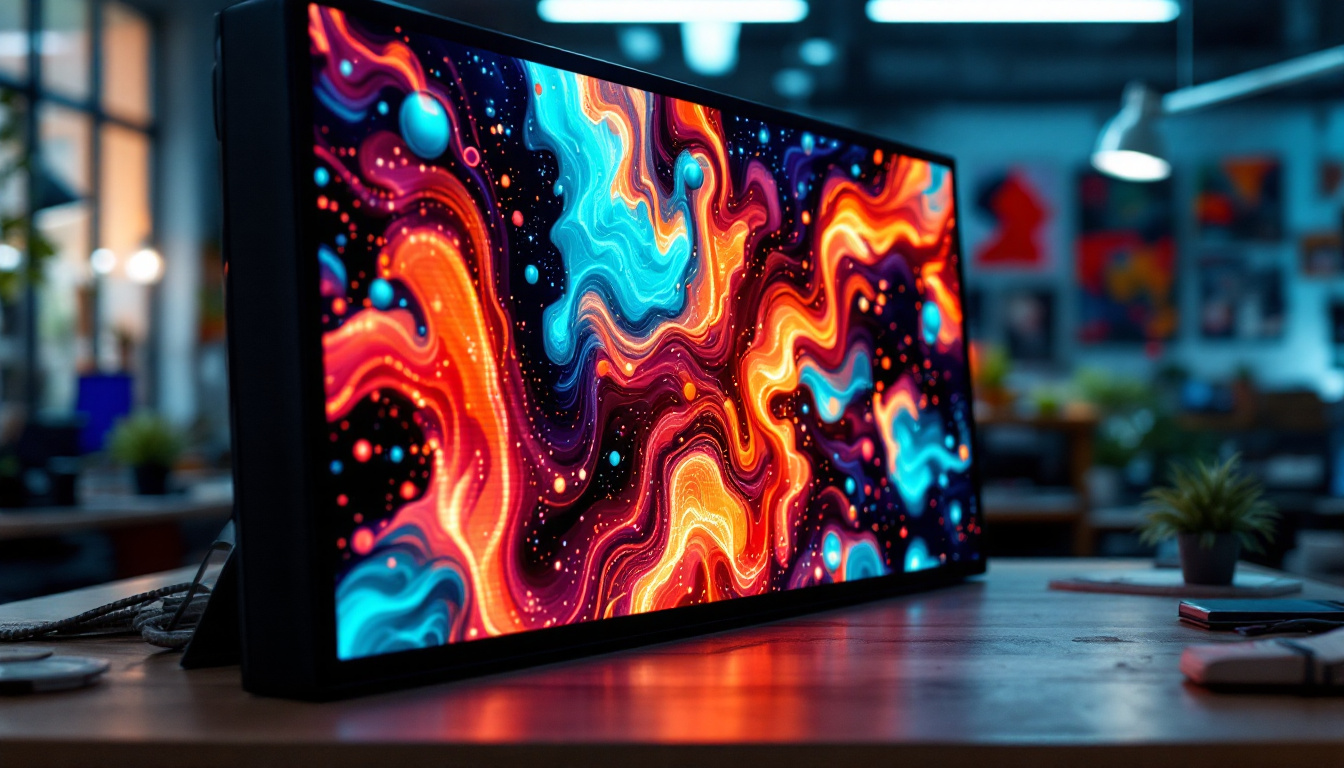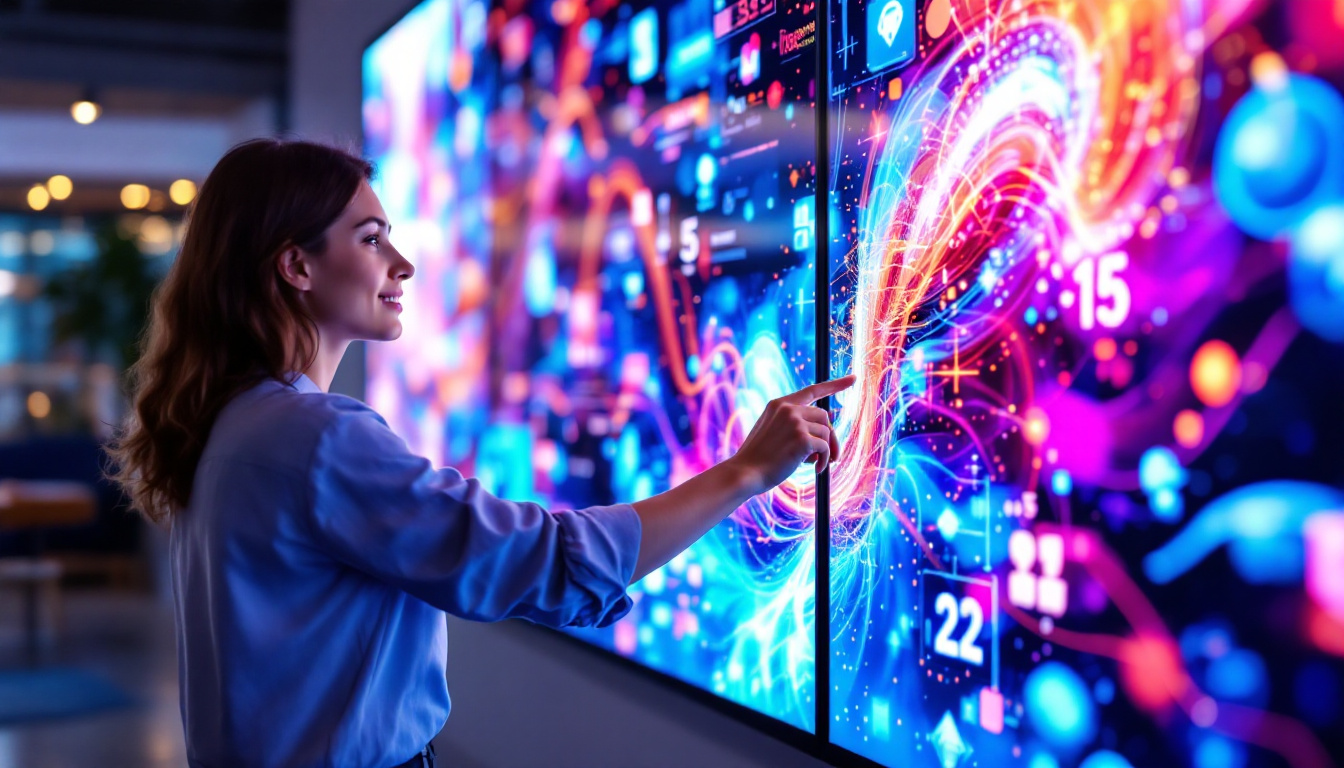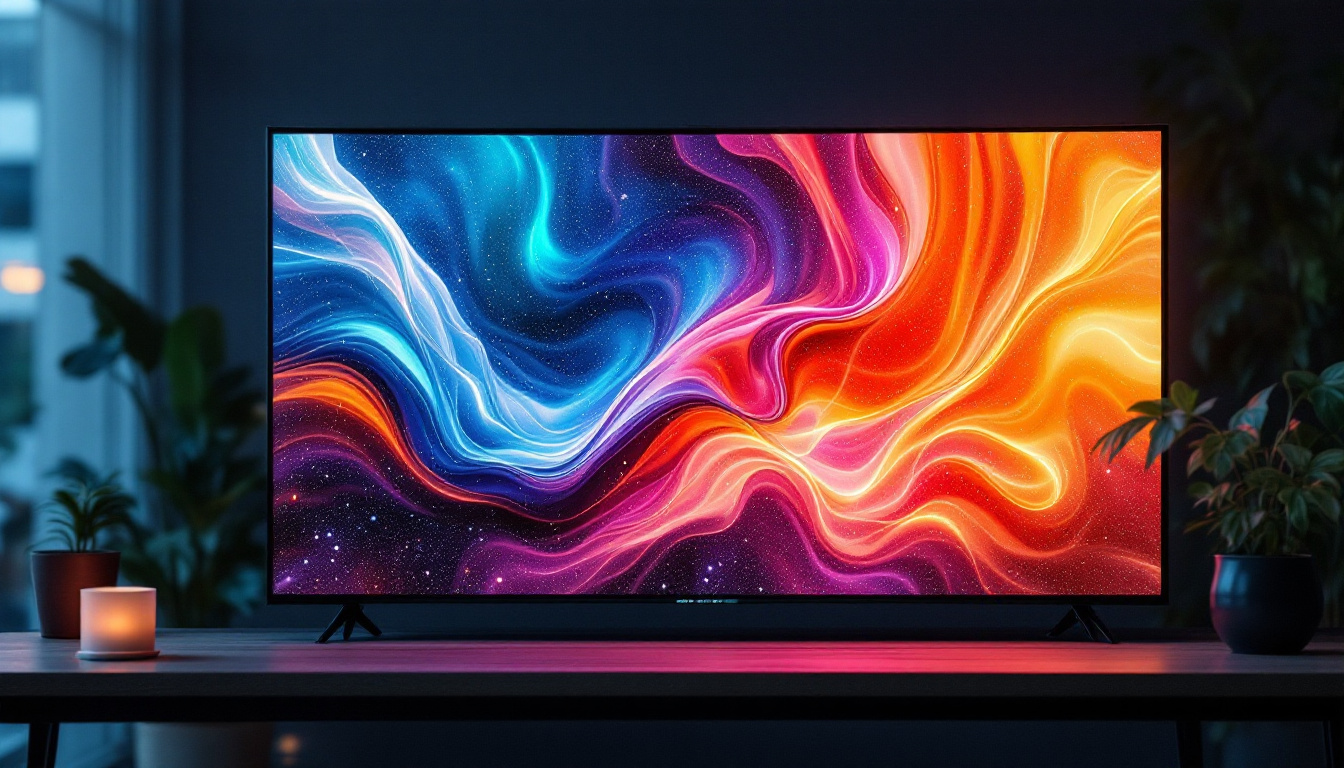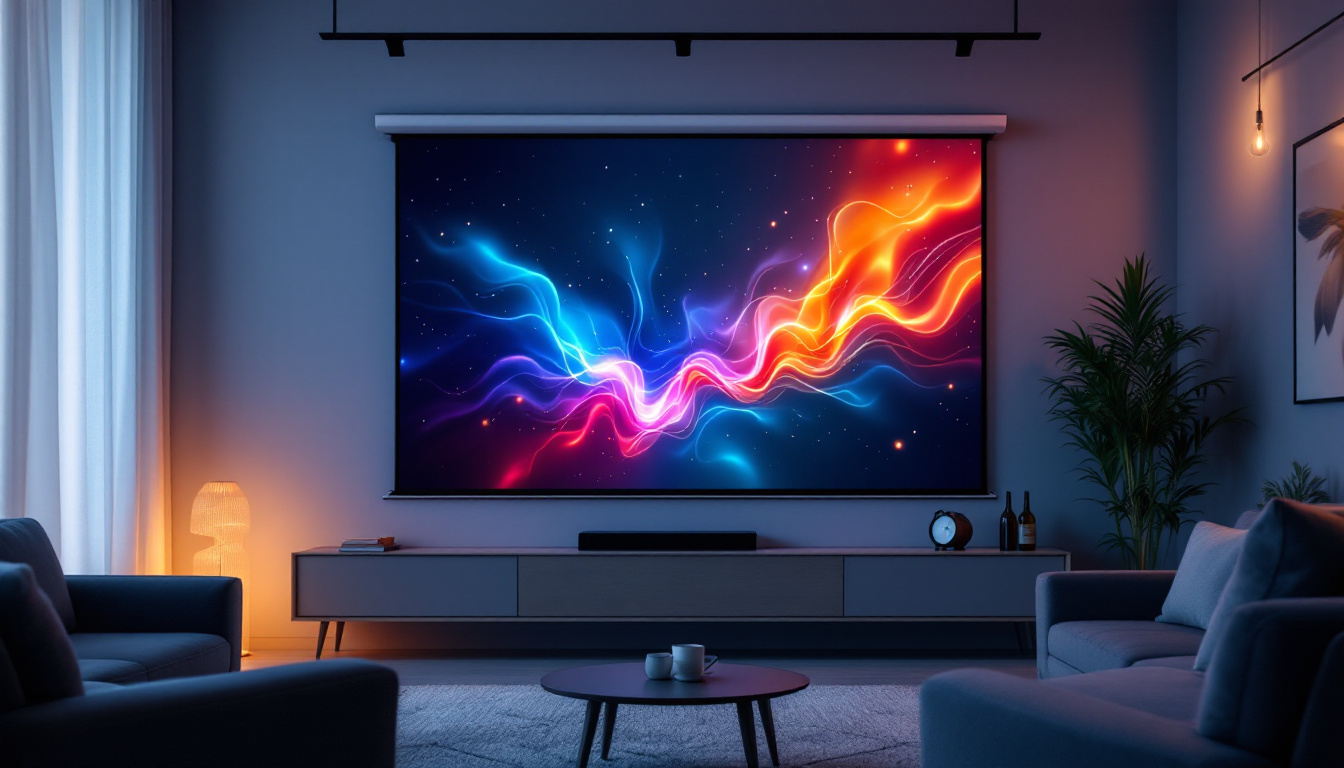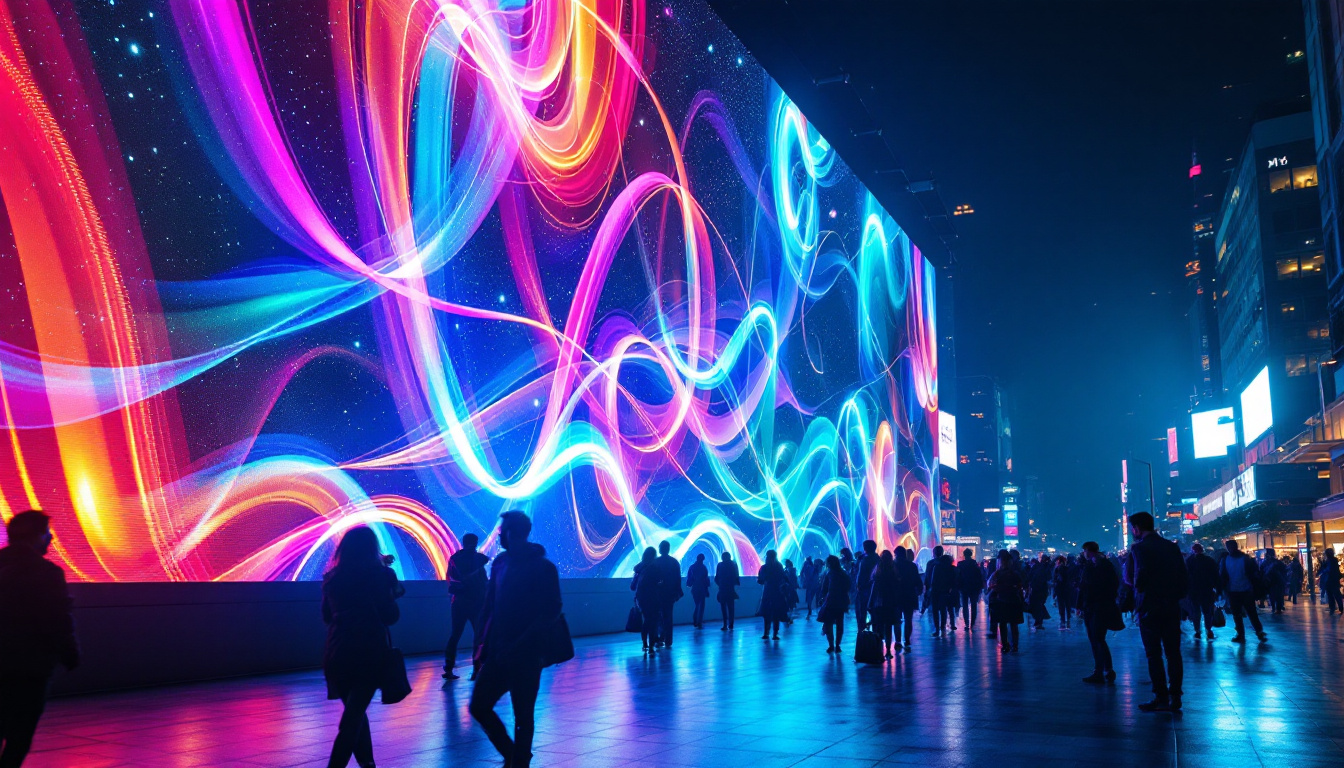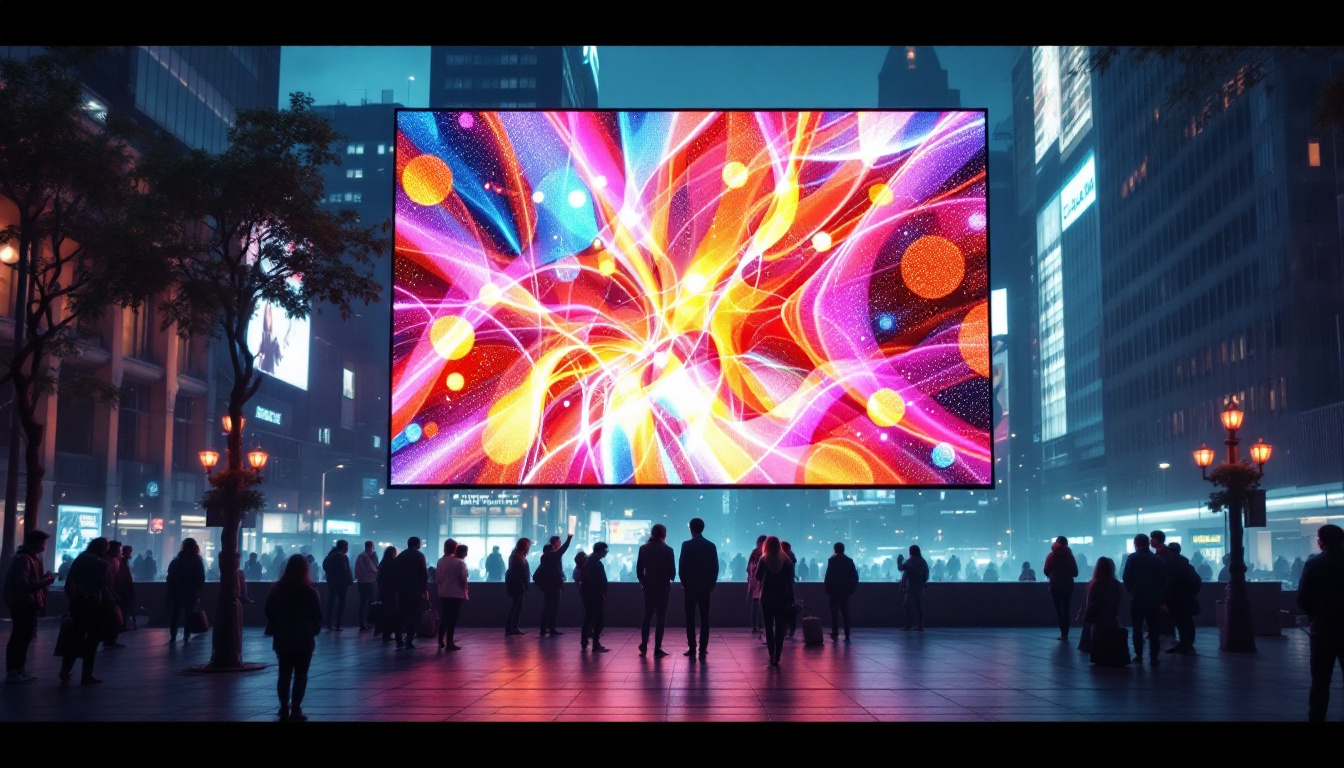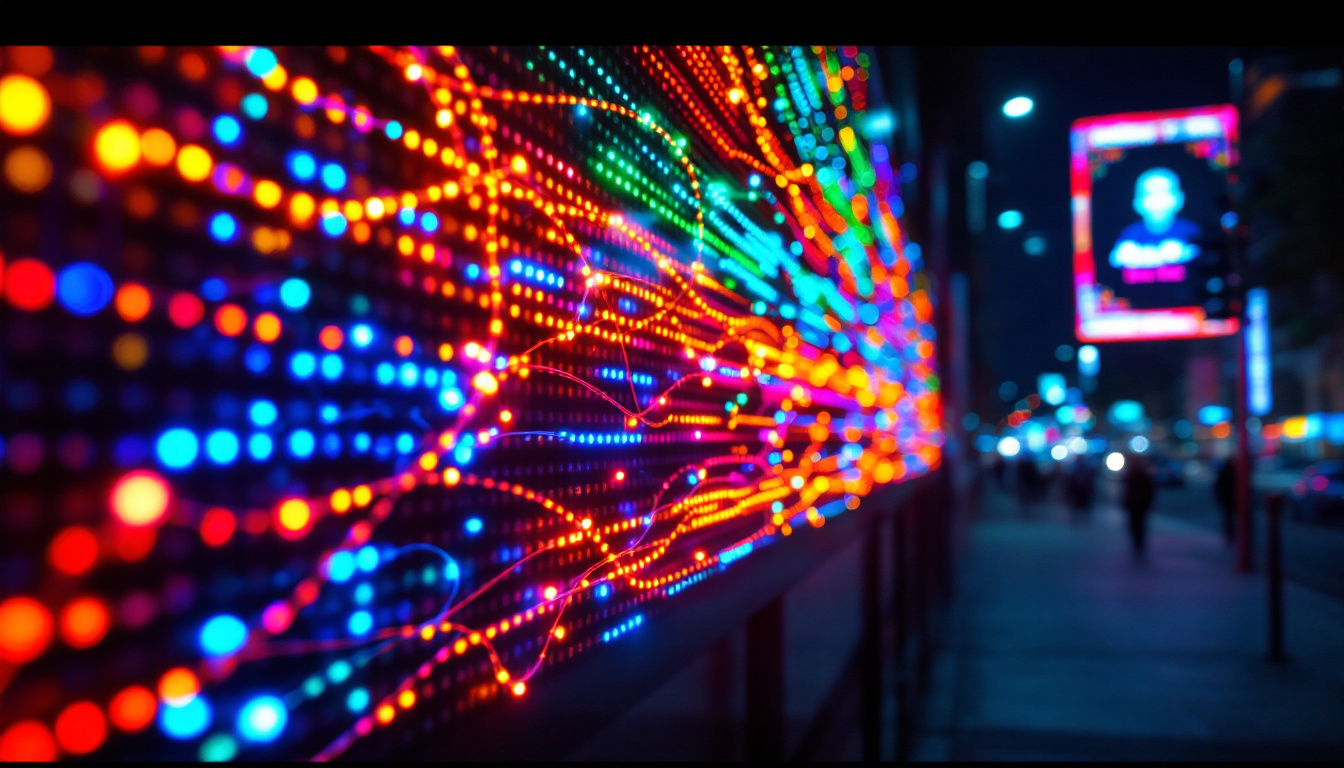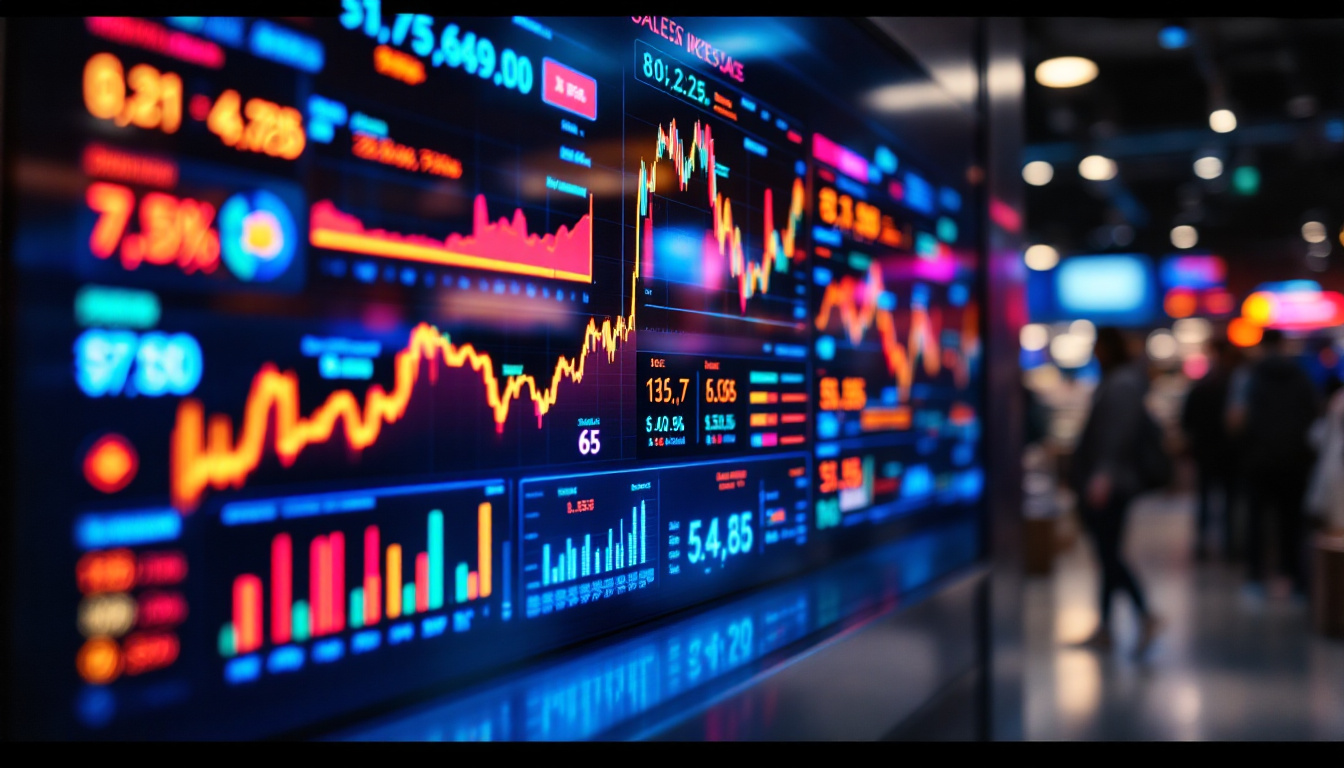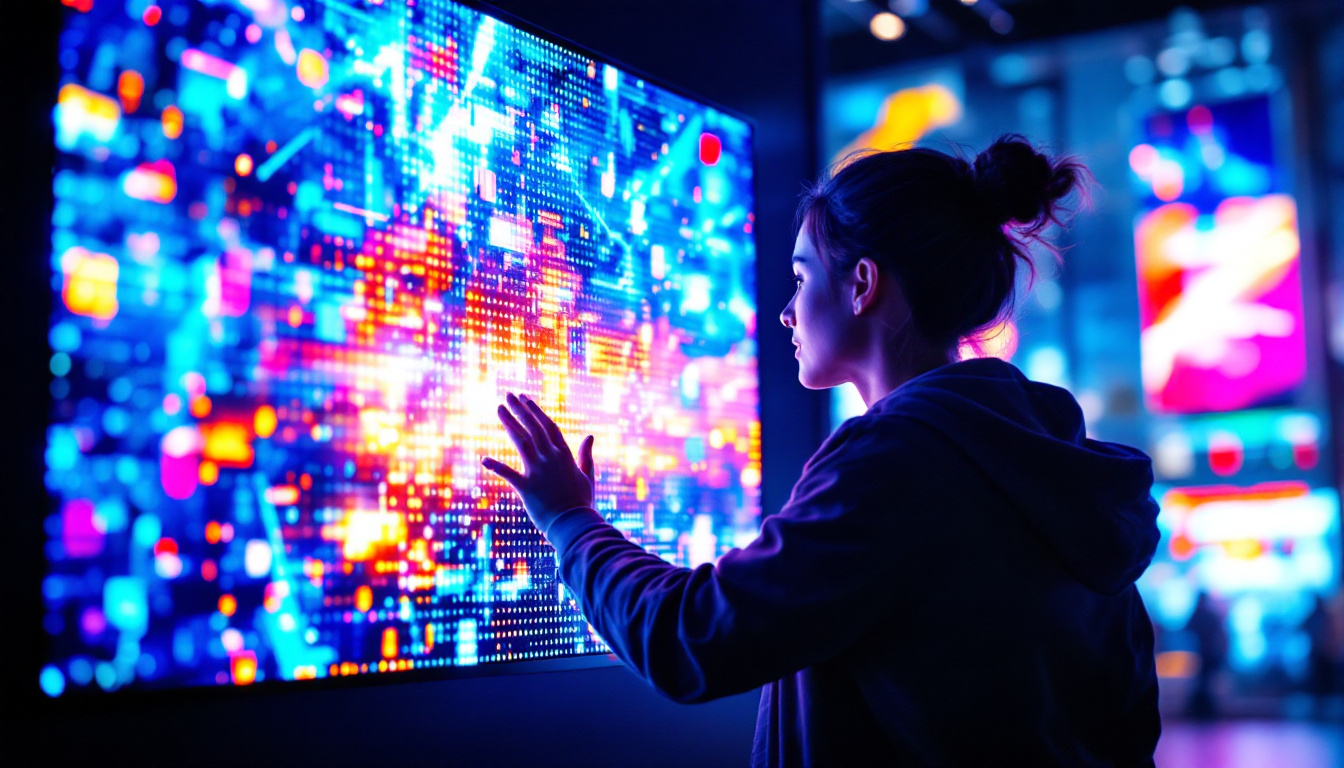In the realm of modern technology, LED displays have revolutionized how we perceive visual information. From the vibrant screens of smartphones to the colossal billboards lining city streets, the use of LED (Light Emitting Diode) technology has become ubiquitous. This article delves into the intricacies of LED displays, exploring their functionality, types, applications, and the future of this dynamic technology.
Understanding LED Technology
At the core of LED displays is the light-emitting diode, a semiconductor device that emits light when an electric current passes through it. Unlike traditional incandescent bulbs, LEDs are highly efficient and have a longer lifespan, making them an ideal choice for various applications. The fundamental principle behind LED technology lies in electroluminescence, where materials emit light in response to an electric current.
The Science Behind LEDs
LEDs are composed of a chip made from a combination of materials, typically gallium, arsenic, or phosphor. When electricity flows through the semiconductor, electrons recombine with holes, releasing energy in the form of photons, which we see as light. The color of the emitted light depends on the materials used in the semiconductor. For instance, different combinations can produce red, green, blue, or white light, leading to the creation of full-color displays. This versatility in color production is one reason why LEDs have become a staple in modern lighting and display technologies, allowing for vibrant and dynamic visuals that can be tailored to specific needs.
Advantages of LED Displays
LED displays offer numerous advantages over traditional display technologies. One of the most significant benefits is their energy efficiency. LEDs consume far less power than incandescent or fluorescent lights, which not only reduces electricity costs but also minimizes environmental impact. Additionally, LED displays are known for their durability and resistance to shock and vibration, making them suitable for both indoor and outdoor applications. This robustness is particularly important in settings such as stadiums or concert venues, where equipment is subject to heavy use and potential damage.
Another notable advantage is brightness. LED displays can achieve high levels of brightness, making them easily visible in various lighting conditions, from dimly lit rooms to bright sunlight. This characteristic is particularly beneficial for advertising and public information displays, where visibility is crucial. Furthermore, the ability to adjust brightness levels dynamically allows for energy savings during low-light conditions, enhancing their efficiency even further. The rapid response time of LEDs also means that they can display fast-moving images without blurring, making them ideal for applications such as digital signage and video walls, where clarity and precision are paramount.
Types of LED Displays
LED displays can be categorized into several types, each designed to meet specific needs and applications. Understanding these types is essential for selecting the right display for a particular use case.
Direct View LED Displays
Direct view LED displays consist of individual LED modules that are arranged in a grid. These displays are commonly used for large outdoor advertising billboards and video walls. The modular design allows for easy scaling, enabling the creation of displays of various sizes. Direct view LEDs are known for their high brightness and excellent color reproduction, making them ideal for capturing attention in busy environments. They are particularly effective in daylight conditions, where their luminosity can cut through ambient light, ensuring that advertisements and information are clearly visible even in bright sunlight. Additionally, advancements in technology have led to improvements in pixel pitch, allowing for higher resolution displays that can convey intricate details and vibrant imagery, which is crucial for engaging audiences.
LED-backlit LCD Displays
LED-backlit LCD displays utilize LED technology to illuminate traditional liquid crystal displays (LCDs). In this setup, LEDs are placed behind or around the edges of the LCD panel, enhancing brightness and contrast. This type of display is prevalent in televisions, computer monitors, and mobile devices. The use of LED backlighting allows for thinner screens and improved energy efficiency compared to traditional fluorescent backlighting. Furthermore, many modern LED-backlit LCDs offer features such as local dimming, which enhances contrast by adjusting the brightness of specific areas of the screen. This capability allows for deeper blacks and more vivid colors, making these displays suitable for a wide range of applications, from gaming to professional graphic design. As technology continues to evolve, we can expect to see even more innovations in LED-backlit LCD displays, including improved color accuracy and faster refresh rates.
Organic LED Displays (OLED)
Organic LED displays (OLED) represent a significant advancement in display technology. Unlike traditional LEDs, OLEDs use organic compounds that emit light when an electric current is applied. This technology allows for thinner, more flexible screens with superior color accuracy and contrast ratios. OLED displays are increasingly popular in high-end televisions and smartphones due to their ability to produce deep blacks and vibrant colors. The self-emissive nature of OLED technology means that each pixel can be turned on or off independently, resulting in true black levels and a wider viewing angle. Moreover, the flexibility of OLED panels opens up exciting possibilities for innovative applications, such as curved and foldable screens that enhance user experience. As manufacturers continue to refine OLED technology, we are likely to see even more applications in various industries, from automotive displays to wearable technology, further expanding the versatility of this remarkable display type.
Applications of LED Displays
The versatility of LED displays has led to their widespread adoption across various industries. From entertainment to transportation, the applications of LED technology are vast and varied.
Advertising and Marketing
One of the most prominent applications of LED displays is in advertising and marketing. Digital billboards, storefront displays, and event signage utilize LED technology to capture the attention of passersby. The ability to change content quickly and remotely makes LED displays an attractive option for businesses looking to promote their products and services dynamically.
Entertainment and Events
In the entertainment industry, LED displays play a crucial role in enhancing the visual experience. Concerts, sporting events, and theatrical performances often feature large LED screens to display live feeds, graphics, and animations. These displays create an immersive environment, allowing audiences to engage with the performance on a deeper level.
Transportation and Public Information
LED displays are also widely used in transportation systems for displaying information to passengers. Train stations, airports, and bus terminals utilize LED screens to provide real-time updates on schedules, delays, and other essential information. The clarity and visibility of LED displays ensure that passengers receive timely and accurate information, contributing to a smoother travel experience.
The Future of LED Displays
The future of LED display technology is promising, with ongoing advancements poised to enhance performance and expand applications. As technology evolves, several trends are emerging that will shape the landscape of LED displays in the coming years.
MicroLED Technology
MicroLED technology is one of the most exciting developments in the LED display sector. This technology involves the use of tiny, microscopic LEDs that can be arranged to form high-resolution displays. MicroLEDs offer several advantages, including improved brightness, contrast, and energy efficiency. Additionally, they can be made flexible, opening up new possibilities for innovative display designs.
Integration with Smart Technologies
As the world becomes increasingly interconnected, the integration of LED displays with smart technologies is set to rise. Smart LED displays equipped with sensors and connectivity features can provide personalized content based on user preferences and behaviors. This capability will enhance the effectiveness of advertising and improve user engagement in various applications.
Sustainability Initiatives
With growing concerns about environmental impact, the LED display industry is focusing on sustainability. Manufacturers are exploring eco-friendly materials and production processes to minimize waste and energy consumption. Additionally, advancements in recycling technologies are being developed to ensure that LED displays can be disposed of responsibly at the end of their lifecycle.
Challenges in LED Display Technology
Despite the many advantages of LED displays, several challenges remain that need to be addressed for the technology to reach its full potential.
Cost Considerations
While the cost of LED technology has decreased over the years, high-quality LED displays can still be expensive to produce and install. This cost can be a barrier for smaller businesses or organizations looking to adopt LED technology. As manufacturing processes improve and economies of scale are realized, it is expected that prices will continue to decrease, making LED displays more accessible.
Heat Management
LED displays generate heat during operation, which can impact performance and longevity if not managed properly. Effective heat dissipation techniques are essential to ensure that LED displays operate within optimal temperature ranges. Manufacturers are continually working on innovative cooling solutions to address this challenge and enhance the reliability of LED displays.
Color Consistency and Calibration
Maintaining color consistency across large LED displays can be challenging, especially when using multiple modules or panels. Variations in color output can lead to an uneven viewing experience. Calibration techniques and advanced software solutions are being developed to address this issue, ensuring that colors remain consistent and true to life across the entire display.
Conclusion
LED displays have transformed the way visual information is conveyed, offering unparalleled brightness, energy efficiency, and versatility. As technology continues to evolve, the applications and capabilities of LED displays will expand, paving the way for innovative solutions in advertising, entertainment, transportation, and beyond. While challenges remain, ongoing advancements in microLED technology, smart integration, and sustainability initiatives promise a bright future for LED displays. As industries embrace this technology, the potential for creativity and engagement will only grow, making LED displays an essential component of modern communication and marketing strategies.
Discover LumenMatrix’s Innovative LED Solutions
Ready to elevate your visual communication with the latest in LED technology? LumenMatrix is at the forefront of creating immersive and dynamic LED display modules tailored to your needs. Whether you’re looking for Indoor LED Wall Displays, Outdoor LED Wall Displays, or specialized solutions like Vehicle LED Displays, LED Sports Displays, or even Custom LED Displays, LumenMatrix has the expertise to bring your vision to life. Embrace the future of advertising, entertainment, and public information with our cutting-edge displays. Check out LumenMatrix LED Display Solutions today and see how we can transform your space with clarity and impact.

